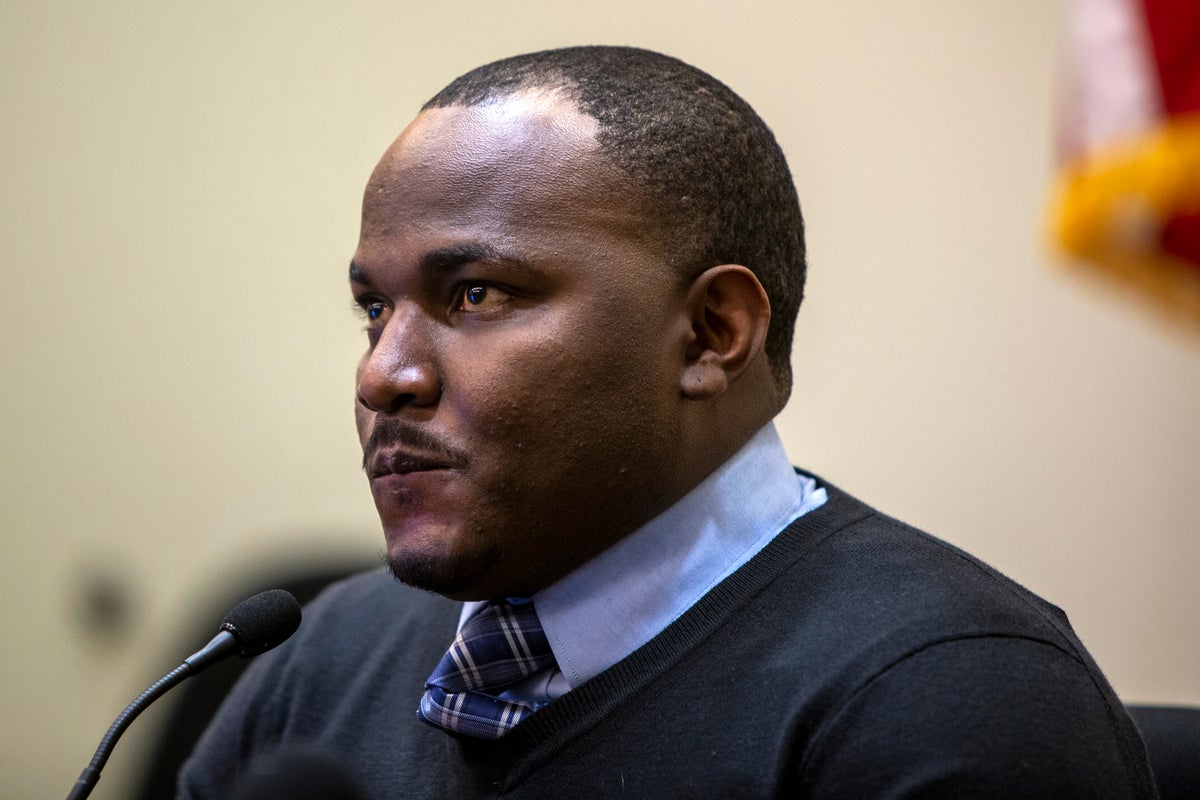
A Michigan police officer who killed a Black motorist “always had the upper hand” during a physical struggle that preceded the shooting, a witness testified Thursday.
A judge in Grand Rapids, Michigan, began hearing evidence to determine if Christopher Schurr will stand trial for second-degree murder in the April death of Patrick Lyoya.
The 26-year-old native of Congo was on the ground when he was shot in the back of the head following a traffic stop, short foot chase and intense scuffle in a residential neighborhood. The incident was recorded on police and bystander video.
Schurr's lawyers insist he acted in self-defense, though he was fired by the police department.
The legal standard to send the case to trial is probable cause, a low bar, Judge Nicholas Ayoub noted.
Wayne Butler was getting out of a morning shower when he noticed police lights flashing on his street. He said he was instantly concerned when he saw Lyoya, the driver, outside of the car.
“I could tell Patrick was confused. The confusion is, first of all, you shouldn’t have been out of the car as an African-American male,” said Butler, 41, who is Black. “Don't you know he’s got a gun, he’s got a Taser, he could kill you? Clearly he didn't know what the rules in America are about traffic stops.”
Butler said Lyoya began running “like he was disoriented playing tag on two front lawns” before Schurr quickly caught him and the two men began a “wrestling match.”
“The officer is always winning, 60-40. He always had the lead, it wasn't by much,” Butler said. "You could tell he was getting worn out, but he always had the upper hand."
Butler said he stopped watching Schurr and Lyoya in order to get his phone to record video. He didn't see the shooting.
“Patrick was never on the offensive,” Butler testified.
During cross-examination, Butler acknowledged telling investigators last spring that Schurr did nothing wrong. But after watching video of the shooting, he said Lyoya's “execution-style” death changed his opinion.
Video shows Schurr, who is white, telling Lyoya that he stopped his car because the license plate didn’t match the vehicle. Roughly a minute later, Lyoya began to run after he was asked to produce a driver’s license.
Schurr fired the fatal shot while Lyoya was on the ground, demanding that he let go of the officer’s Taser. The device discharges small amounts of electricity to incapacitate someone.
Bryan Chiles, an engineer at Taser developer Axon, inspected Schurr's device. He testified that it had been discharged but didn't strike anyone.
Chiles said it still could have been used, especially when pressed against someone in “drive stun” mode.
Grand Rapids police Sgt. Nicholas Calati said Schurr's Taser was near Lyoya's hands when officers arrived and found the body.
For the first time, Lyoya's friend who was the passenger in the car spoke publicly in court. Aime Tuiishme had recorded the shooting on his phone.
Tuiishme said he and Lyoya had been drinking with friends the previous night and stopped at a store for beer before the encounter with Schurr. He believed Lyoya pulled over because of a strange car noise, not a police stop.
“I really don't want to watch this video over and over,” Tuiishme said during questions by Schurr's lawyer.
Grand Rapids, which has a population of about 200,000, is 160 miles (260 kilometers) west of Detroit.







